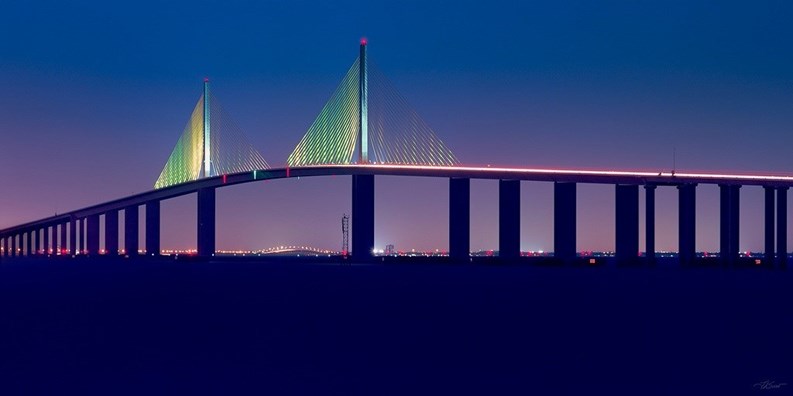With a coastline offering up stunning beaches, striking sunsets and world class salt water fishing, not to mention extreme water sports, Tampa Bay has evolved from a haven for partying spring breakers into a city with a vibrant culture with roots planted in American and Cuban history.
Located in Western Florida on the Gulf of Mexico, Tampa Bay is fast becoming the commercial center of Florida’s west coast and the epicenter of the area’s banking and high tech manufacturing industries.
In recent years, Tampa has seen a spike in high-market demand from consumers, signaling more concentrated wealth in the area. Although Tampa has about 346,000 people, and the statistical Tampa Bay-St. Petersburg area is comprised of roughly an estimated 2.9 million, Tampa is now one of the fastest-growing large cities in the country, along with Atlanta, New Orleans and Austin, Texas. Since the 2010 census, downtown Tampa’s two residential high-rises—the 381-unit owner-occupied Skypoint and the 394-unit rental-based Element—have added hundreds of new residents. Other condo and affordable housing projects, such as Metro 510, have added to the population boom.
Rents range from less than $600 for a one-bedroom apartment in Metro 510 to more than $1,500 for a one-bedroom place in the Element.
Early History
Approximately 6,000 years ago, Tampa Bay formed as a brackish drowned river valley estuary with a wide mouth connecting it to the Gulf of Mexico. Prior, to that, it was a large fresh water lake, possibly fed by the Floridian Aquifer through natural springs.
The first locals to fully adapt to a seaside lifestyle in Tampa Bay were the Manasotans, a variant of the Weeden island culture who lived on Tampa Bay’s shore around the 5th Century B.C., but they mysteriously vanished and were replaced by other tribes from outside the area, primarily the Safety Harbor culture. The Safety Harbor culture was dominant in the area at the time of first contact with Europeans. The Tocobaga, who built their principal town near today’s Safety Harbor in the northwest corner of Old Tampa Bay are the best known group from that area, but there were many coastal villages organized into various small chiefdoms all around the bay.
During this period, Tampa Bay was teeming with fish and wildlife. People of the Safety Harbor culture dined on mullet, shellfish, sea turtles, manatees and crabs.
Spanish maps dated in 1584 identify Tampa Bay as Baya de Spirito Santo (Bay of The Holy Spirit). A 1695 map identified the area as Bahia Tampa and maps dated in 1794 and 1800 show the bay divided with three different names, Tampa Bay, Hillsboro Bay and the Bay of Spiritu (o) Santo.
Native American Settlements
Around 1817, Georgia settlers frequently clashed with the Seminoles living in the Spanish Territory of Florida along the Gulf of Mexico, including what is known today as Tampa Bay. Raids were frequently conducted by the settlers in order to capture runaway slaves and steal Seminole cattle. Since the U.S. government did nothing to restrain the settlers, the Seminoles retaliated with raids on ranches and homesteads in Georgia.
As the conflict escalated Gen. Andrew Jackson ordered Maj. David E. Twiggs to remove the Seminole population from Florida. On November 21, 1817, Twiggs led 250 Georgia militiamen and attacked at dawn. Four men and one woman were killed in the assault. Many Seminoles escaped into the nearby swamps. In retaliation nine days later a group of Seminoles ambushed a boat commanded by Lt. Robert Scott that ended with 30 whites killed or captured, including soldiers, women and children.
The following month the War Department ordered Jackson to raise a sufficient number of troops and march into Florida—still a Spanish territory—and bring the Seminoles under control. Jackson arrived in the area on March 9, 1818 with over 3,500 men. The Seminoles, clearly out numbered and unprepared, raised little resistance and fled leaving behind their destroyed and burning villages in their wake. The following year the United States acquired Florida from Spain.
For the next 80 years communities sprouted up along the bay until the 1880s when railroad links, the discovery of phosphate and the arrival of the cigar industry jump-started the area’s development and launched it into the 19th century.
The area grew considerably as a result of World War II and during the 1950s and 1960s experienced a record-setting population growth spurt.
Recreation, Museums and Spring Breakers
Tampa Bay is Florida’s largest open-water estuary, extending over 400 square miles and has been designated an “Estuary of National Significance” by the U.S. Environmental Protection Agency. Two National Wildlife Refuges are located in Tampa Bay: Pinellas National Wildlife Refuge and the refuge on Egmont Key. Other popular attractions are the Tampa Bay History Center, the Bok Tower Gardens nature preserve and the USF Botanical Gardens. Recreation runs the gamut from golfing, tennis, water sports and beaches to zoos, aquariums, and even a giraffe ranch.
But the mere mention of Florida in spring brings an influx of rambunctious, often scantily-clad college students to mind. And they not only flock to Florida’s Atlantic Coast but the Gulf Coast as well. Panama City is the new in-spot for spring breakers and they come to central and western Florida to party in Tampa Bay, Clearwater and St. Petersburg. It’s not a accolade that the Chamber of Commerce will want to tout, (that seven Florida communities are on the top trashiest spring break list), however, but the college set has been a fixture on Florida’s beach landscape since World War II. Fort Lauderdale started the trend in the late 1940s and Daytona Beach followed suit routinely attracting 250,000 to 300,000 college students each year. Today, those numbers have dwindled significantly as municipal authorities have enacted strict measures on drinking and public gatherings.
Christy Smith-Sloman is a staff writer at The Western & Central Florida Cooperator.




Leave a Comment